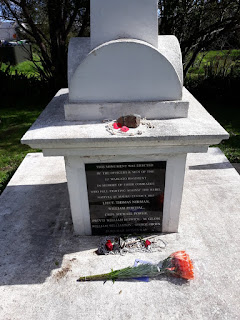The Ministry of Education has rejected a plea for the New Zealand Wars of the 19th century to be made a compulsory part of the history curriculum at our schools. The Ministry says local school boards should decide whether or not the wars are taught on their campuses. Entrusting such a decision to Pakeha-dominated boards in redneck towns and suburbs is like giving responsibility for science education to the local branch of the Exclusive Brethren.
Back at Rosehill College in the '90s the school board gave our seventh form history teacher the choice of spending a term on either Elizabethan England or the NZ Wars. She chose to take us back to the Elizabethan era, despite the fact that our school was close to scores of historic sites from the Waikato War - imperial redoubts, Kingitanga pa, churches with reinforced walls and bullet holes, sites of guerrilla ambushes, and graveyards where soldiers lay. What a waste.
I have talked to hundreds of New Zealanders about the Waikato War, as part of my research for Ghost South Road, the book I'm publishing soon with photographers Paul Janman and Ian Powell. I've noticed a huge gap between Maori and Pakeha knowledge of the war. Most Maori know at least the outlines of the conflict, and many can give detailed accounts of battles, and produce artefacts - old cannon shells, photographs of warriors - that are held as taonga by their whanau.
A few Pakeha, especially older people who were born in this country, know about the Waikato War, but the big majority have an encylopaedic ignorance of the conflict. Some of them have told me that the war was fought in the fifteenth or sixteenth century; some have insisted that it was a fight between rival Maori iwi, and had nothing to do with Pakeha; others have claimed that the fighting occurred in the years before 1840, and was brought to a close by the Treaty of Waitangi.
The Waikato War is by far the most important event in New Zealand history. Without it, New Zealand would not be a unified nation, the dairy industry would not exist, and Auckland would still be our capital city. The ignorance of Pakeha about the foundational event in their country's history is not healthy, especially when it is set beside the vivid and bitter memories of Maori.
[Posted by Scott Hamilton]











